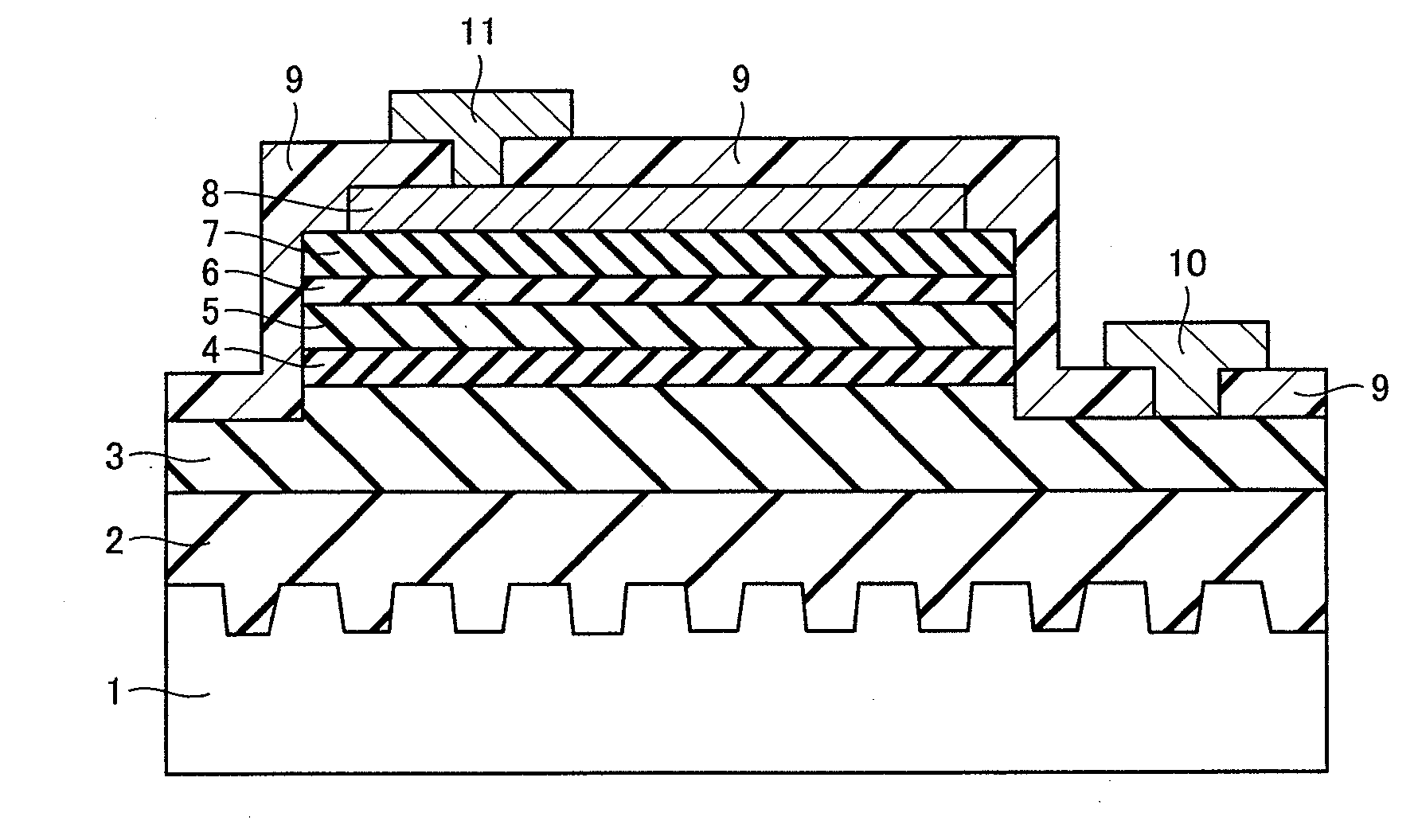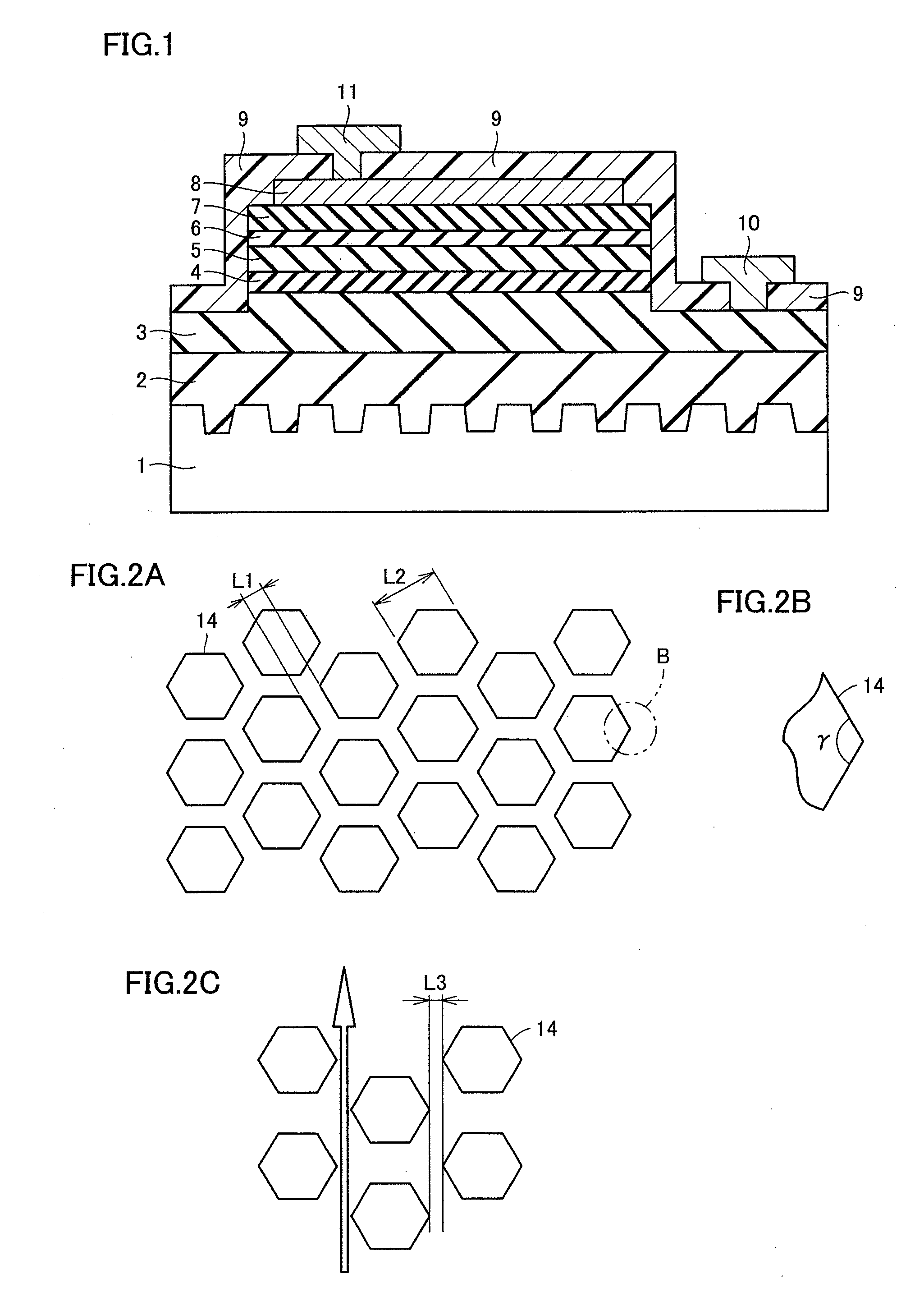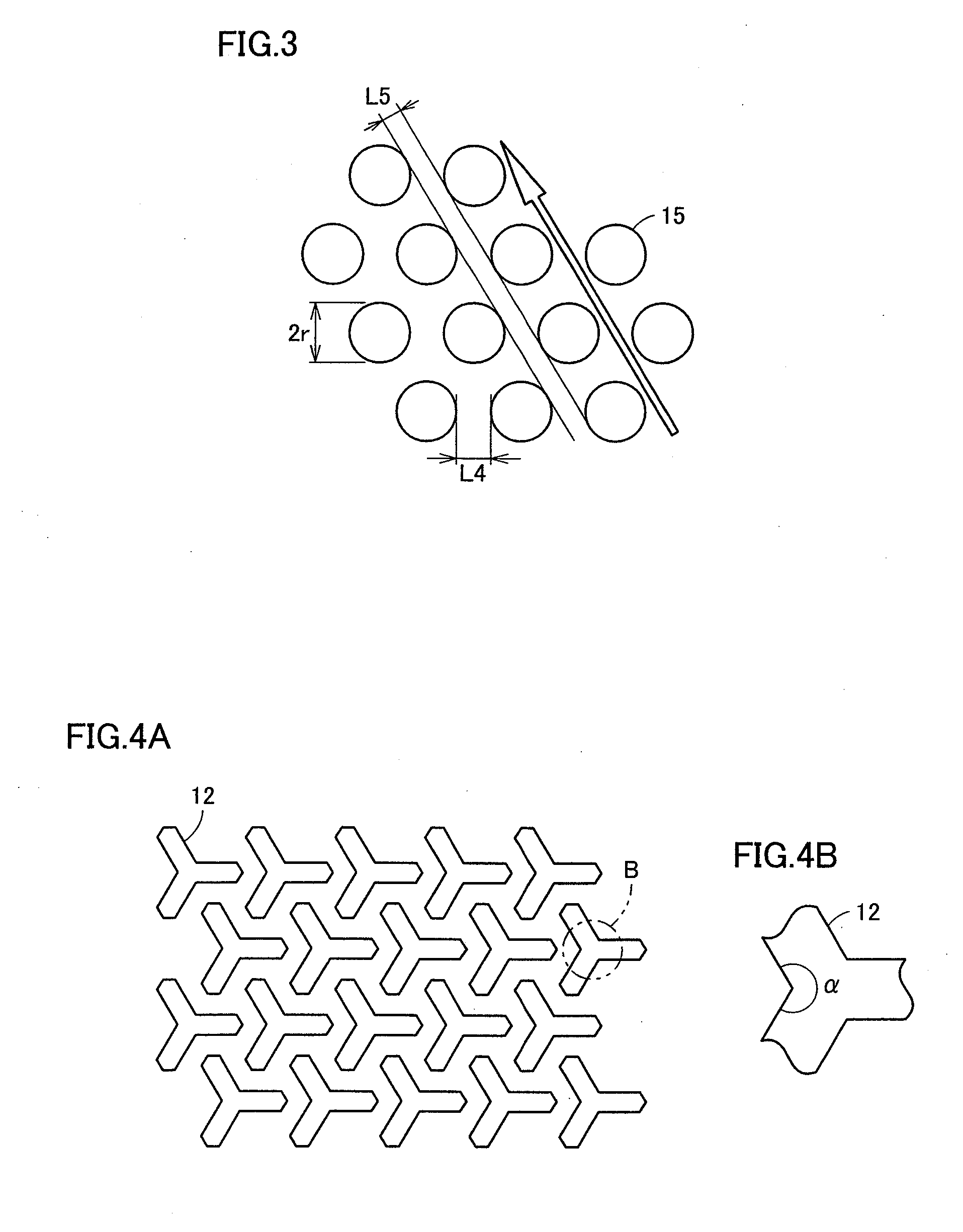Nitride semiconductor light emitting element
- Summary
- Abstract
- Description
- Claims
- Application Information
AI Technical Summary
Benefits of technology
Problems solved by technology
Method used
Image
Examples
experimental example 1
[0102]The following describes results of measuring outputs of light emitting elements having the five patterns of rise regions or recess regions formed on the upper surface of light transmitting substrate 1, i.e., the rise regions or recess regions of FIGS. 2A, 2C, 3, 4A, and 5A. As to the shapes shown in FIGS. 4A, 5A, when the narrowest portion of each of the rise regions had a width of 1.5 μm and the narrowest portion of each of the recess regions had a width of 1.5 μm, the outputs of the corresponding light emitting elements were 30 mW at a voltage of 3.1 V.
[0103]As to the shape shown in FIG. 2A, with L1=1 μm and L2=3.5 μm, the output of the light emitting element was 29 mW at a voltage of 3.1 V. As to the shape shown in FIG. 3, with L4=1μm and r=5 μm, the output of the light emitting element was 27 mW at a voltage of 3.1V. As to the shape shown in FIG. 2C, the output of the light emitting element was approximately 20-25 mW at a voltage of 3.1V.
[0104]As such, it can be recognized...
experimental example 2
[0107]The following describes a method for forming a nitride semiconductor light emitting element in which an AIN buffer layer 16 was formed, as well as a result of measuring its output.
[0108]First, as with experimental example 1, the recess and rise regions each having the shape shown in FIG. 4A or FIG. 5A were formed on the surface of light transmitting substrate 1. As light transmitting substrate 1, a sapphire substrate was used. Light transmitting substrate 1 was placed on a heater provided within a chamber of a DC magnetron sputtering device, in which voltage is applied through the DC-continuous method.
[0109]Light transmitting substrate 1 was placed thereon so that the c-plane of light transmitting substrate 1 faced the surface of an Al target and the shortest distance between the center of the surface of the Al target and the c-plane of light transmitting substrate 1 was 50 mm. In this state, light transmitting substrate 1 was heated to 500° C. by the heater. Thereafter, only ...
PUM
 Login to View More
Login to View More Abstract
Description
Claims
Application Information
 Login to View More
Login to View More - R&D
- Intellectual Property
- Life Sciences
- Materials
- Tech Scout
- Unparalleled Data Quality
- Higher Quality Content
- 60% Fewer Hallucinations
Browse by: Latest US Patents, China's latest patents, Technical Efficacy Thesaurus, Application Domain, Technology Topic, Popular Technical Reports.
© 2025 PatSnap. All rights reserved.Legal|Privacy policy|Modern Slavery Act Transparency Statement|Sitemap|About US| Contact US: help@patsnap.com



